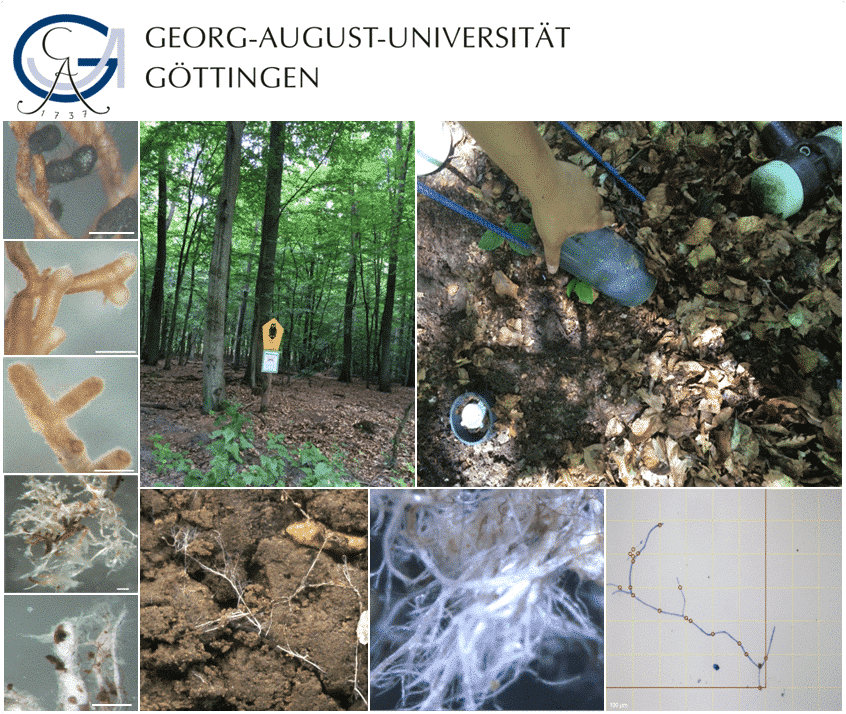Mycorrhizal mycelium production in relation to forest management intensity and ecosystem functions

- Extraradical mycorrhizal mycelium production and turnover depend on forest management intensity (i.e. carbon and nitrogen availability).
- Functional redundancy of mycorhizal fungal communities increases with carbon availability.
- The identity of ectomycorrhizal fungal species controls colonization of different mineral substrates.
The goal of proEMM is to investigate the biomass and species composition of soil mycorrhizal extramatrical mycelium (EMM) in relation to land-use intensity (i.e. carbon and nitrogen availability). In temperate forests, mycorrhizal fungi represent a massive segment of soil microbial biomass and diversity. Their mycelia function as a “flexible joint” that holds carbon and nitrogen flows within the plant-fungus system. Hence, knowledge about EMM production, biomass, and turnover are necessary to interrogate primary ecosystem functions such as carbon and nitrogen cycling. As the quantity and the type of external mycelium is a species´ trait, any chance in mycorrhizal fungal community structure may alter the overall EMM properties.
Investigation of the link between mycorrhizal fungi and ecosystem from the EMM perspective has been difficult to approach due to methodological limitation, especially regarding the exclusion of saprotrophic fungal hyphae. The assessments have been until recently based on hyphal traps (i.e. mesh bags) mainly filled with sand, which due to the poor organic content minimizes ingrowth of saprotrophic fungi. However, the substrate quality strongly biases the estimation of EMM growth. We apply here a new technique (Phillips et al. 2014) using a double-mesh bag system, filled with site-specific soil, surrounded by a sand barrier.
Quantification of fungal biomass:
- Visual examination under the dissecting microscope
- Hyphal extraction and converting the hyphal length to biomass
- Measurement of soil ergosterol content and conversion to hyphal biomass
Species composition of EMM:
- Extraction of fungal hyphae by centrifugation and filtration
- Hyphal fungal community analysis by high-throughput 454 sequencing









